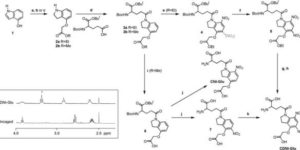4-Carboxymethoxy-5,7-dinitroindolinyl-Glu: an improved caged glutamate for expeditious ultraviolet and two-photon photolysis in brain slices.
Caged neurotransmitters are useful photochemical tools for selective stimulation of synapses and other transmitter receptors. Before illumination, the caged compound is biologically inert. Photolysis breaks a covalent bond, liberating the caged neurotransmitter. Release can be rapid, so the resultant synaptic stimulation can mimic a natural one (Matsuzaki et al., 2001). Uncaging does not replace traditional electrode stimulation; rather, it is a useful complement to it for several reasons: (1) a single transmitter is normally photoreleased, (2) stimulation of voltage-gated ion channels is not required for transmitter release, (3) receptors at many synapses can be activated simultaneously according to the area (or volume) of illumination, (4) unnatural amino acids can be photoreleased, and (5) subquantal or supraquantal neurotransmitter release is feasible.
